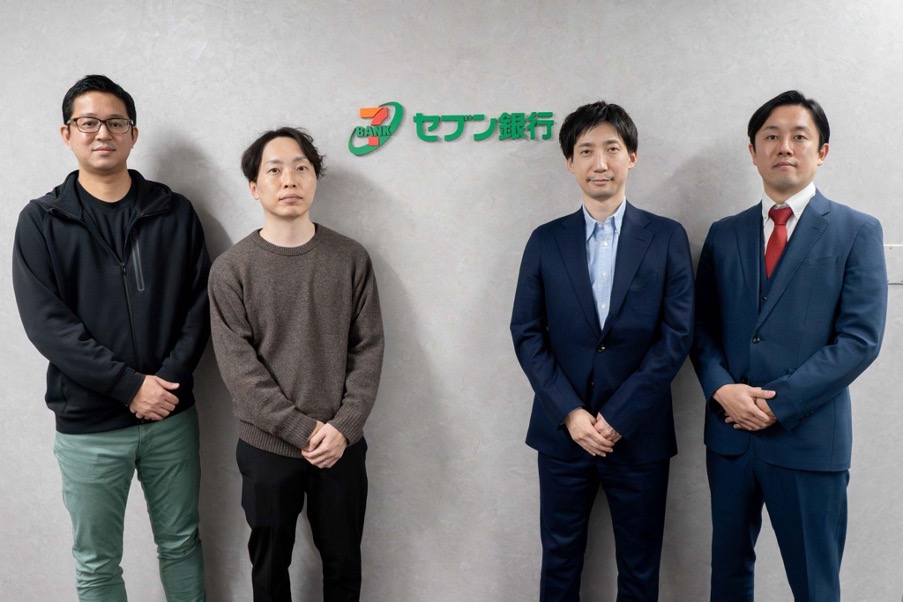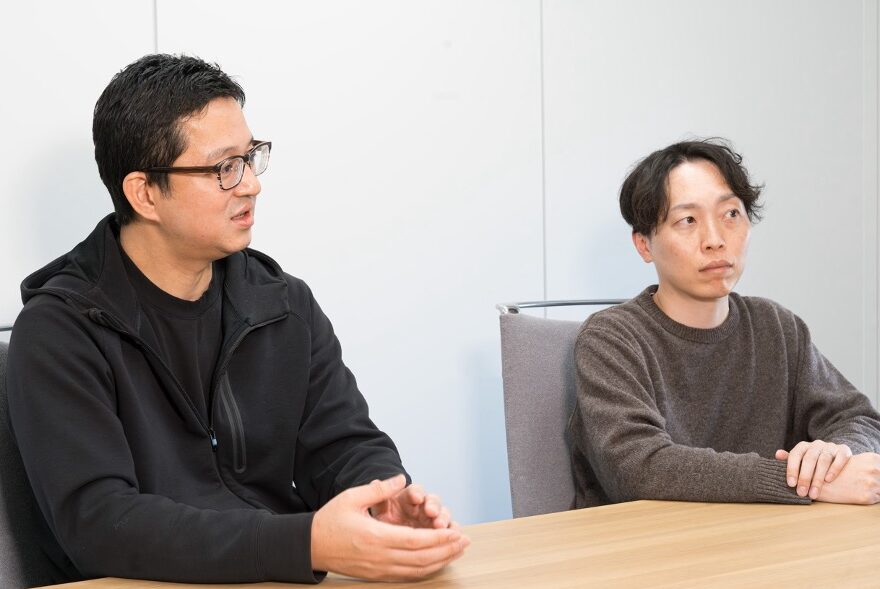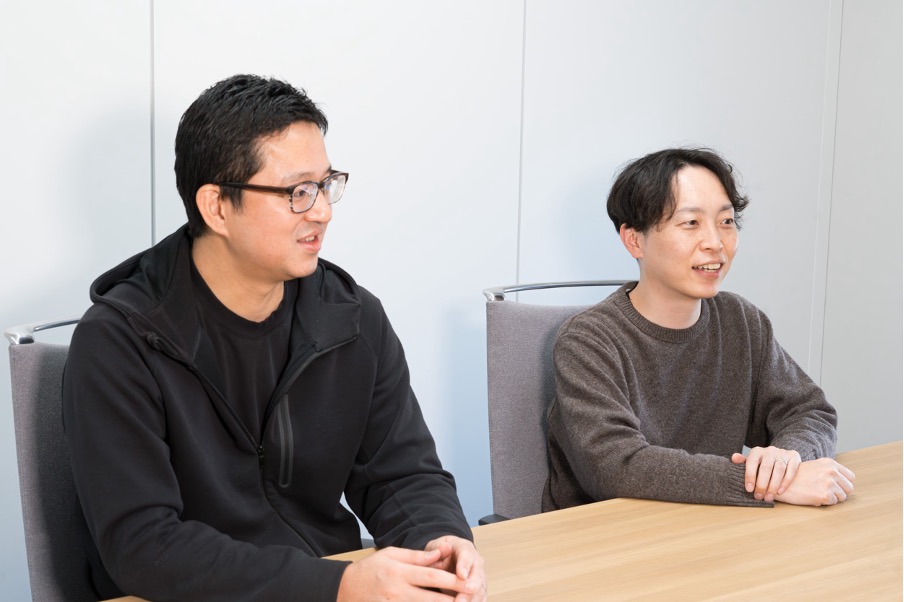An Interview with Nippon Life Insurance Company (Click here to read the original interview article)

Life insurance has long been perceived as an intangible and complex concept, making it difficult for many—especially younger generations—to fully understand or relate to.In an era where traditional face-to-face sales interactions are declining, how can insurance companies bridge the gap and make their services more approachable? Nippon Life Insurance Company has taken an innovative approach by integrating AI-driven character-based communication to enhance customer engagement. We sat down with Rokuro Ouchida, who was General Manager of the Marketing Planning Department at the time of the interview, to learn how this unique strategy is transforming the industry.
The Challenge: Explaining Insurance to a Digital Generation
Q: What were the key challenges Nippon Life faced in engaging younger customers?
Ouchida: “One of the biggest challenges was that life insurance is an intangible product. Unlike other consumer goods, it’s not something people actively seek out—it’s meant for future uncertainties. This made it particularly difficult to explain its necessity to younger generations.
“In the past, insurance sales representatives played a critical role in introducing the product. Many young people learned about insurance from trusted colleagues or family members. However, as in-person interactions have declined, we found it increasingly challenging to engage younger customers in meaningful conversations about insurance.”
Q: How did traditional digital marketing efforts perform?
Ouchida: “We invested in social media and digital ads to reach a broader audience, but these were primarily one-way communication methods. While they helped increase awareness, they didn’t allow us to address customers’personal concerns in real-time. We needed a way to have interactive, two-way conversations about life insurance.”
The Solution: A Character-Based AI Platform
Q: What led Nippon Life to explore an AI-driven character platform?
Ouchida: “When we first saw the character platform, we were drawn to its approachability and engagement potential. Instead of simply presenting information, this platform allows customers to converse with a friendly, AI-driven character that gradually introduces the concept of insurance.”
“We realized that instead of a sales pitch, what customers needed was a comfortable, pressure-free environment where they could explore insurance at their own pace.”
Q: What were the key reasons for choosing Capex’s solution?
Ouchida: “Three main factors influenced our decision:
- Deep industry understanding – Capex demonstrated expertise in insurance sales, recognizing the importance of addressing future concerns rather than focusing solely on the product.
- Trust in AI security – The system was designed to prevent misinformation and ensure reliable communication.
- Clarity on system capabilities – Capex clearly outlined what the AI could and could not do, helping us set realistic expectations within our company.”
Results: How AI Conversations Transformed Engagement
Q: What impact has the AI character had on customer interactions?
Ouchida: “We were surprised by how much engagement improved. Previously, our communication was mostly one-way—we would push out information, but there was little engagement. With the introduction of the character platform, however, we’ve seen a shift. Customers are now able to gradually deepen their understanding of insurance through casual conversation. One of the clearest outcomes has been an improvement in appointment booking rates. We’ve observed a measurable increase in the number of users who book consultations after interacting with the AI character.
What surprised us the most was the unexpectedly high engagement from customers in their 40s and 50s. We initially introduced the character platform with younger audiences in mind, but it turned out that middle-aged users were more likely to engage with it over a longer period of time. It seems that, for them, the character provides a low-pressure, approachable way to access information about insurance.
Q: What made this approach more effective than traditional methods?
Ouchida: “Unlike traditional sales interactions, where customers often feel pressured, the AI character lowered psychological barriers. Customers felt more comfortable asking questions without the fear of being ‘sold to.’ This helped build trust and improve the overall perception of life insurance.”

Refining the Customer Journey: Learning from Data
Q: How did you refine the platform after the initial rollout?
Ouchida: “We closely monitored where users disengaged and fine-tuned the conversation flow accordingly. For instance, we found that if insurance topics were introduced too abruptly, engagement dropped. So, we adjusted the dialogue to ease into discussions naturally.”
“For example, if a user mentioned enjoying sports, the AI character might respond with: ‘Sports are great! Staying active is important. By the way, have you ever thought about how you’d handle things if you were unexpectedly injured?’
Rather than immediately promoting insurance, the conversation unfolds gradually, using relatable scenarios to naturally lead into the topic. This approach makes the interaction feel organic and thoughtful.”
The Future: Expanding AI’s Role in Insurance
Q: How does Nippon Life plan to expand the use of AI-driven engagement?
Ouchida: “Currently, we’ve integrated the AI character into our website, but we’re exploring additional applications:
- Integration with sales representatives – The AI character could assist in lead nurturing before customers speak with an agent.
- Data-driven sales support – Insights from AI conversations could help agents tailor their approach for each customer.
“The ultimate goal is to bridge digital engagement with real-world interactions, creating a seamless customer-first experience.”
Q: Who else could benefit from this approach?
Ouchida: “Any industry struggling with one-way communication can benefit from an AI-driven approach. Whether it’s insurance, finance, this kind of interactive engagement helps customers to get better understand complex offerings in a friendly, approachable way, build trust, and drive conversions.”

![]()
Final Thoughts
Nippon Life’s AI character platform is a testament to how technology can humanize digital experiences. By enabling natural, two-way conversations, it has reshaped how insurance is perceived and made an intangible product more accessible.
As industries continue to explore digital transformation, AI-driven engagement stands as a powerful tool to connect with customers in a meaningful way. And for Nippon Life, it’s only the beginning.

세븐은행 인터뷰(Click here to read the original interview article)
카드론 전환율 향상을 위한 새로운 접근법
세븐은행은 카드론 사업에서 일반적인 문제를 겪고 있었습니다. 즉, 잠재 고객을 유치하는 것은 어렵지 않았으나, 실제 신청까지 이어지는 전환율이 낮다는 점이었습니다.
웹 광고, 랜딩 페이지, CTA(Call-to-Action) 최적화를 진행했음에도 불구하고, 고객들이 마지막 단계에서 망설이는 심리적 장벽을 극복하는 것이 어려웠습니다. 이러한 문제를 해결하기 위해 세븐은행은 PickUp을 도입하고 LINE을 활용한 개인 맞춤형 고객 유치 전략을 전개했습니다. 세븐은행의 다카다 다이스케 그룹장과 가츠야마 코스케 조사역에게 PickUp 도입 과정과 효과에 대해 들어보았습니다.
인터뷰 대상자:
- 다카다 다이스케(Takada Daisuke) – 그룹장, 뱅킹통합부, 세븐은행
- 가츠야마 코스케(Katsuyama Kosuke) – 조사역, 뱅킹통합부, 세븐은행
주요 과제
- 웹 광고 및 랜딩 페이지를 통해 잠재 고객을 유치하는 데 성공했으나, 실제 전환율(컨버전율)에서 과제가 존재함.
- 기존 웹 마케팅 방식만으로는 고객의 심리적 불안을 충분히 해소하지 못함.
PickUp을 선택한 이유
- 성과 기반 과금 방식으로 리스크를 최소화하고, CPA를 기존 광고 대비 70% 수준으로 조정할 수 있음.
- LINE을 활용하여 쿠키리스(Cookieless) 환경에서도 지속적인 고객 접점을 유지 가능.
- 유연한 시나리오 설계와 고객 니즈에 맞춘 효율적인 운영.
도입 효과
- 초기 시나리오 완료율이 70%에서 80% 후반대로 향상되며 고객 경험 개선.
- 고객의 불안을 해소하여 서비스 이용 의향을 높이고, 신청 프로세스 개선.
- 등록 후 220일이 지난 후에도 신청이 이루어지는 등 장기적인 고객 접점 유지에 성공.
고객이 겪는 주요 심리적 장벽 파악
다카다: “카드론 서비스 자체에는 많은 관심이 있지만, 고객들은 신청을 망설이는 경향이 있었습니다. 웹 광고와 랜딩 페이지에서 흥미를 보였음에도 불구하고, 마지막 단계에서 이탈하는 경우가 많았습니다. 이 ‘마지막 한 걸음’을 도와줄 솔루션이 필요했습니다.”
랜딩 페이지 최적화, 키워드 변경, 광고 카피 수정 등 일반적인 웹 마케팅 전략을 적용했지만, 이러한 변화만으로 고객의 불안을 완전히 해소하는 데는 한계가 있었습니다.
PickUp 도입 결정 배경

다카다: “처음에는 PickUp이 카드론 같은 금융 상품에 적합할지 확신이 서지 않았습니다. 카드론은 필요로 하는 고객에게는 매우 유용한 상품이지만, 관심이 적은 고객에게는 부정적으로 보일 수도 있습니다. 반복적으로 접근하면 오히려 역효과가 날 가능성도 있었습니다.”
가츠야마: “현재 디지털 마케팅 환경은 쿠키리스(Cookieless) 시대로 변화하고 있습니다. 고객과 지속적으로 접점을 유지하는 것이 점점 어려워지고 있는 상황이죠. 이러한 환경에서 LINE과 같은 친숙한 커뮤니케이션 채널을 활용하여 쌍방향 소통을 유도할 가능성이 높다고 판단했습니다. 이를 통해 고객이 카드론에 대한 불안을 해소하고, 더욱 신뢰할 수 있는 신청 프로세스를 만들 수 있을 것으로 기대했습니다.”
결국 여러 차례 논의를 거쳐, 고객 경험을 해치지 않으면서도 자연스럽게 유도할 수 있는 PickUp 도입을 결정했고, 비교적 빠른 3~4개월 만에 적용할 수 있었습니다.
UI 및 전략 최적화를 통한 높은 전환율 달성
도입 초기, 세븐은행은 다른 유사 서비스를 함께 검토했으나, 최종적으로 비용 효율성과 리스크 최소화가 PickUp을 선택한 가장 큰 이유였습니다.
다카다: “PickUp의 CPA가 기존 웹 광고 대비 70% 수준으로 설정될 수 있었던 점이 가장 큰 매력이었습니다. 성과 기반 과금 모델 덕분에 리스크를 낮추면서 더 높은 성과를 기대할 수 있었습니다.”
사용자 경험 개선을 통한 성과 향상
PickUp 도입 초기, 첫 번째 시나리오 완료율은 70% 정도로 나쁘지 않았습니다. 그러나 PickUp 운영사인 Capex는 추가적인 최적화를 통해 80~90%까지 끌어올릴 수 있다고 조언했습니다. 데이터를 분석한 결과, 세븐은행의 주요 고객층은 비교적 연령대가 높은 사용자였으며, 작은 글씨나 복잡한 UI가 가독성을 저해할 가능성이 있음을 발견했습니다.
이를 개선하기 위해 텍스트 기반 옵션을 버튼 스타일로 변경하고 글자 크기를 키웠으며, 그 결과 완료율이 80% 후반대로 상승하는 효과를 보였습니다.
고객 불안 해소를 위한 맞춤형 기능 추가
다카다: “대부분의 고객이 가장 걱정하는 부분은 ‘내가 대출 심사를 통과할 수 있을까?’입니다. 이 불안을 줄이기 위해 LINE 내에서 사전 심사 기능을 도입하여 고객이 원하는 만큼 시뮬레이션할 수 있도록 했습니다. 분석 결과, 1인당 평균 1.55회 심사 진단을 진행하는 것으로 나타나, 고객이 안심하고 신청할 수 있도록 도와주는 역할을 했습니다.”
또한 계절별 메시지 발송 전략도 효과적이었습니다. 초기에는 30일간만 메시지를 발송했지만, 이후 1년 동안 추가 메시지를 보내는 방식을 도입했습니다. 예를 들어, 연말연시에는 ‘귀성길이나 세뱃돈 등으로 추가 자금이 필요하지 않으신가요?’라는 맞춤형 메시지를 보내 고객의 관심을 유도했습니다.
PickUp이 가져온 장기적인 효과

지속적인 고객 관리를 통해 최초 등록 후 220일이 지난 후에도 신청이 이루어지는 사례가 발생하는 등, 장기적인 접점 유지의 중요성을 다시금 확인할 수 있었습니다.
가츠야마: “처음에는 대부분의 신청이 빠르게 이루어질 것이라 예상했지만, PickUp을 통한 장기적인 접점 관리가 실제 신청률을 높이는 중요한 요소라는 것을 실감했습니다.”
PickUp이 적합한 기업은?
다카다: “PickUp은 심리적 장벽이 높은 상품을 제공하는 기업에 특히 적합합니다. 금융 상품은 물론이고, 고객이 망설이기 쉬운 고액 서비스나 장기 계약이 필요한 상품을 판매하는 기업이라면 매우 유용할 것입니다.”
가츠야마: “Capex는 단순히 솔루션을 제공하는 것이 아니라, 우리의 고객 행동까지 깊이 분석하여 최적의 전략을 제안해 주었습니다. 덕분에 PickUp은 단순한 전환율 향상이 아니라 고객 신뢰 구축에도 큰 역할을 했습니다.”
PickUp은 단기적인 전환율 향상을 넘어, 장기적인 고객 관계 구축을 원하는 기업에 효과적인 솔루션이 될 것입니다.
